There are many ways and means of transport to explore the impressive ruins of Angkor Archaeological Park, but for me nothing could be more affordable and fascinating than a bicycle ride. My first day of cycling in Angkor Archaeological Park covered some beautiful ruins of the temples like Prasat Karvan, Bat Chum Temple, Srah Srang Baray, Banteay Kdei, Pre Rup Temple, East Mebon and Banteay Srei in this order.
I rented a bicycle from a nearby rental shop just outside my hotel on the previous night. Most shops open around 8.00 AM in the morning, so if you will wait to rent a bicycle in the morning, you will loose at least 2-3 hours and you will miss an early departure. There is no extra charge on renting a bicycle in the previous night and once you rented one, you can also keep it in night with you in your hotel, so that you can commute in local market, shops and restaurants. Since, I went through my hotel, they did not ask for any deposit and the rent was 1 USD per day. Bicycle was well equipped with a basket, a front light and a lock.
I started early in the morning around 5.00 AM, which is highly recommended. I had a map of Angkor Archaeological Park as well as Siem Reap City. But, in the Siem Reap city, you can not commute without any local help. So, I asked for the direction and moved towards the Angkor. It was an early morning, so there were very less traffic on the road. After the ride of at least 8 kms, I reached to a check post type of place. A lady asked about my entrance tickets to the park. and then I realized my first mistake. I was on a right path to Angkor Park, but without entry tickets. The ticket counters were 5 kms behind on another road. hmmmm! A guy offered me a ride to the ticker counters and then back to the same place in 2 USD, but my miser mind said that I could go there on my bicycle. So, I refused his offer and again returned back towards the ticket counter. To read more about the ticket prices and routes, please go through this post: How To Plan 3 Days Cycling in Angkor Archaeological Park?

Anyway, I bought a three-days entry ticket to Angkor. Another entrance of the park is just on the main road going from the ticket counters and 3 kms away. There was nobody to check the tickets at that entrance, but the thing is that you can easily travel inside the park area without the tickets, but before entering to any temple, you have to show your tickets at the temple entrance and one more thing, if you are caught in the park area without the valid ticket, even outside the temples, you will be considered as an offender and subjected to some fine.
Proceeding further on that road, I reached to a huge beautiful water channel. This moat (water channel) surrounds the world famous Angkor Wat Temple from all the four sides. I stopped there for a while to clicked the pictures of this beautiful surroundings. The famous Fire Ants (Giant Red Ants) of Angkor Park was everywhere, on the ground, on the trees, inside the small holes. They looked scary, but I simply clicked some pictures and walked away. Angkor Wat Temple was just 2 kms ahead of me, but I took another route to other temples. A common tip is that first you should see the smaller temples in Angkor,because once you see the bigger temples like Angkor and Bayon, you can not admire the other temples in Angkor.
Prasat Karvan (6.5 kms from entrance ticket counters): On my route to other temples of Angkor, first I reached to a small temple known as Prasat Karvan, the ‘Cardamon Sanctuary’ that was once surrounded by a reservoir. Its five brick prasats (temples) have entrances towards the east and built on a single raised platform.
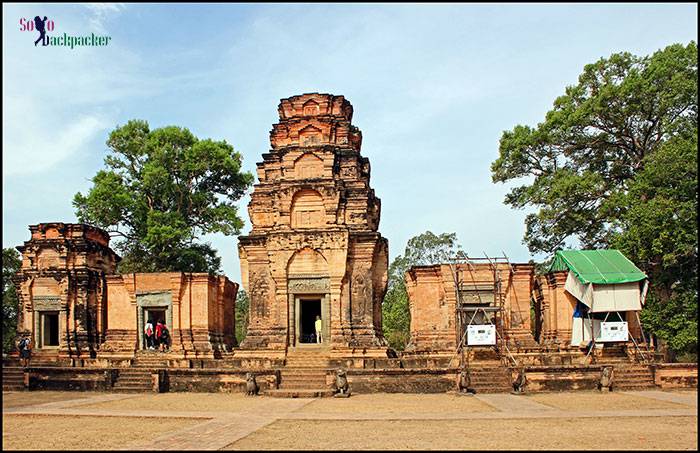
The central prasat has excellent bas-reliefs associated to Lord Vishnu and featuring events like Three steps of Lord Vishnu in the guise of Vamana , Lord Vishnu on Garuda and Lord Vishnu with 8 hands. There are also the images of Goddess on inner wall and on the outer wall of the prasats there are excellent images of Dwarpals, the gate guardians. This temple is thought to date from the period of Harshavarman I.
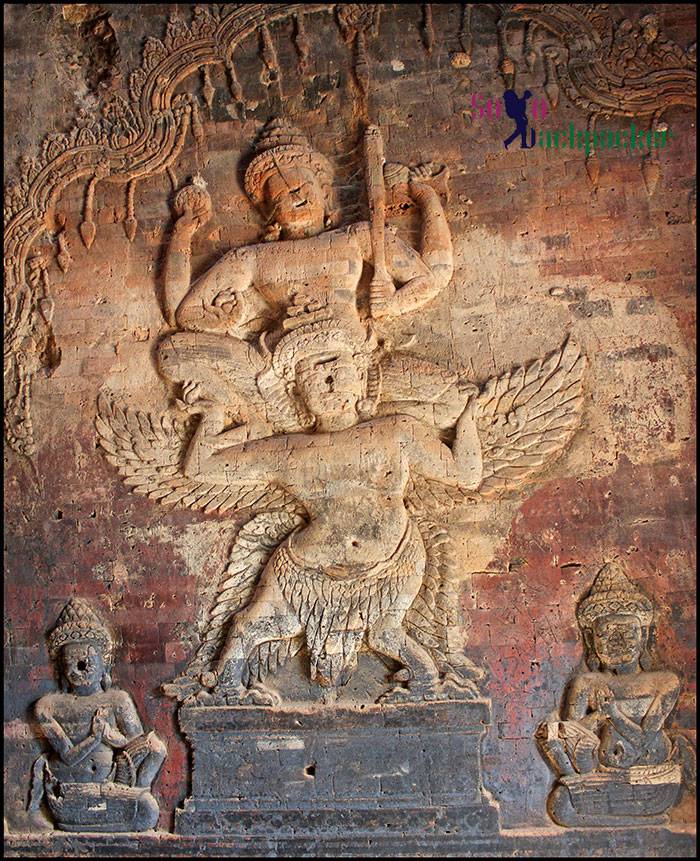
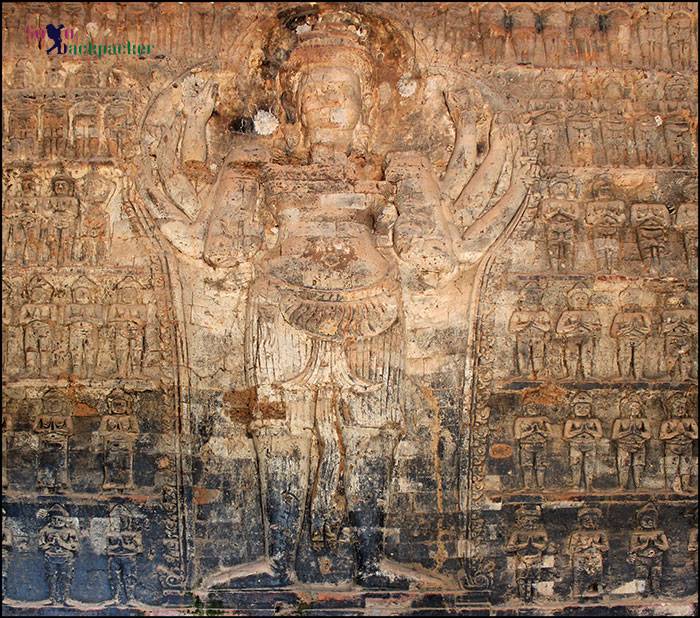
Bat Chum Temple ( 2 kms from Prasat Karvan): Moving further approx. 400 meters from Prasat Karvan, I came across a narrow unpaved road with a small signboard leading towards Bat Chum Temple. I went on this road, and had an excellent experience of Cambodian countryside and rural life. This 1.5 kms long road is passes through the rural fields, in the middle of a small village giving us a great toast of Cambodian lifestyle.
Bat Chum is a very small temple. Three small prasats built on a single raised platform and entrance facing towards the east. This temple was built by Kavindrarimathana, the Buddhist Architect of King Rajendravarman in 960 A.D. On the door of every prasat tower, there is a eulogistic inscription praising the architects. This temple was being restored during that time, so I was unable to enter inside.
Srah Srang Baray (2 kms from Bat Chum Temple): I moved further, and after passing through the village houses came across a huge baray (water reservoir) outside Srah Srang Village. These baray are the lifeline of the Angkor Park area from the beginning. There are also special landing stage and viewing platform, a pavilion, a stairway with guarding lions on a bank of the baray. The Srah Srang Baray is extremely beautiful and at sunset the soft hues make it an ideal place to visit.
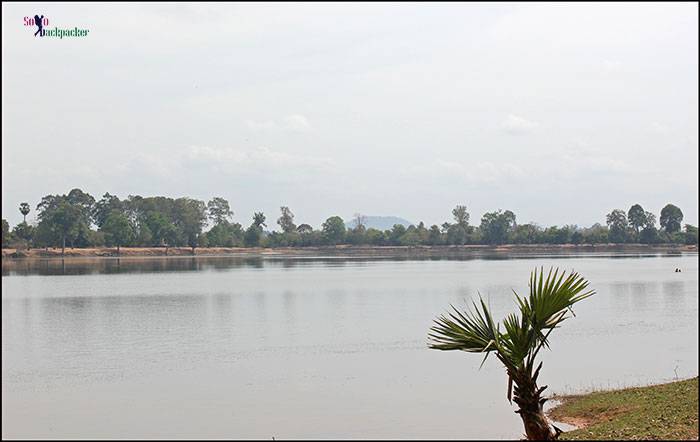
Banteay Kdei (Just across the Srah Srang Viewing Platform, 200 meters away): From there, I went to the nearby Banteay Kdei Temple complex, also known as Citadel of the Cells. It was built by Jayavarman VII in 1181 A.D. It is a huge temple complex with four different enclosures. The entrance to the east is in typical Bayon Style with four axial gopuras surmounted by face-towers with the visages of Lokeshwara.
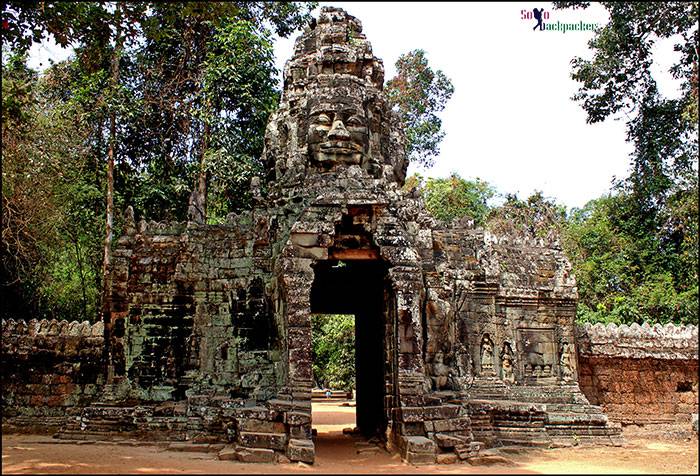
After the main entrance from the east, there is an extensive courtyard for approx. 200 meters. Moving from one enclosure to other and one side to another, this was the first glimpse of the impressive ruins in Angkor Archaeological Park. Interestingly local people have established a statue of Lord Buddha in the middle of the ruins, where we are supposed to pay some offering in the form of cash to the god.
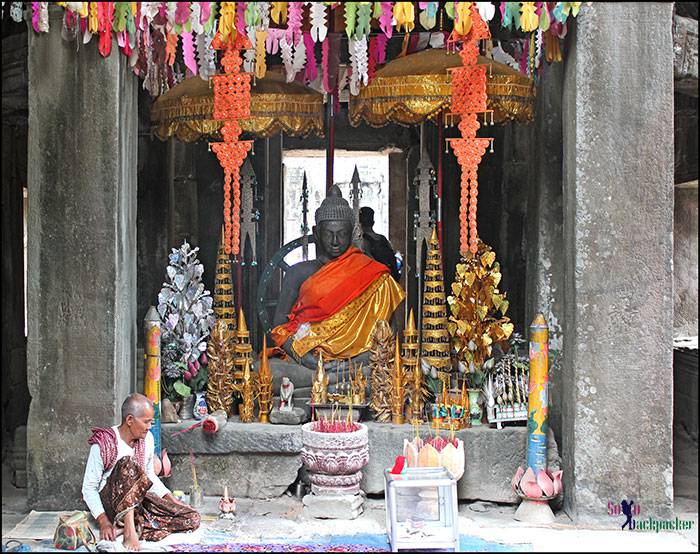
Pre Rup Temple (2.7 kms away from Banteay Kdei): After Banteay Kdei, I reached to Pre Rup Temple. Considered as the masterpiece of Kavindrarimathana, this is one of the most important temple mountains and marks the transition from the pre-classic to classic period. The temple consists of two terraces, on the second of which is a three-tier pyramid made of laterite and a series of wall. On the first level, there are twelve small prasats. On the second level there is a central prasat. The temple walls are full of the excellent decorations with various images and figures.
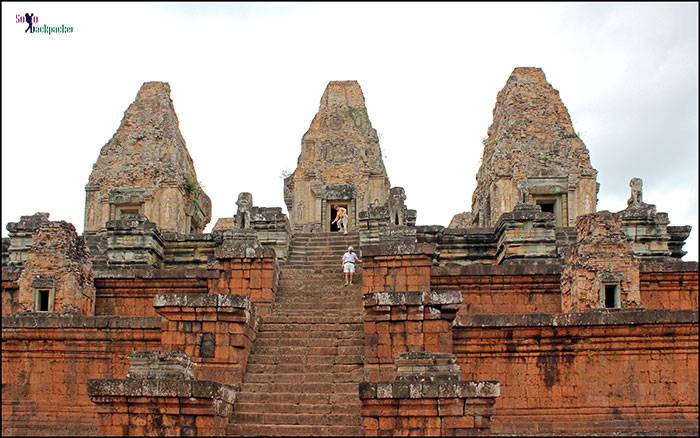
East Mebon (1.3 kms from Pre Rup Temple): To the north of the Pre Rup Temple, there is another impressive temple known as East Mebon, built by the architect Kavindrarimathna. It was supposed to be built on an artificial island and access to this temple was only possible by the boats. This temple has many statues of guardians lions and elephants in excellent conditions. The prasats have the fine carvings of various Hindu figures such as Indra riding Airavata, Shiva is on Nandi and Skanda, the god of war, seated on a peacock.
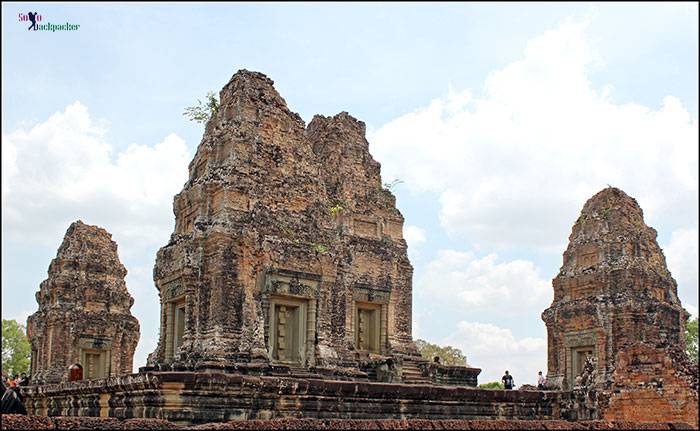
After visiting East Mebon Temple, It was time for the lunch. So, I went on the shops area in front of the temple. Near every temple of Angkor, there are plenty of shops selling food and water to souvenir and clothes. But the prices are very inflated in the park area, nearly 4 times. Even in Siem Reap city, prices for the tourists are at least two times than the locals. On the last day of my bicycle trip, I went on a route off from the park area and when I purchased food items there I discovered this fact. Water bottle of 500 ml cost us 1000 Riels in park area, but there it was only 250 Riels and Coke was also fourth time cheaper than the park area.
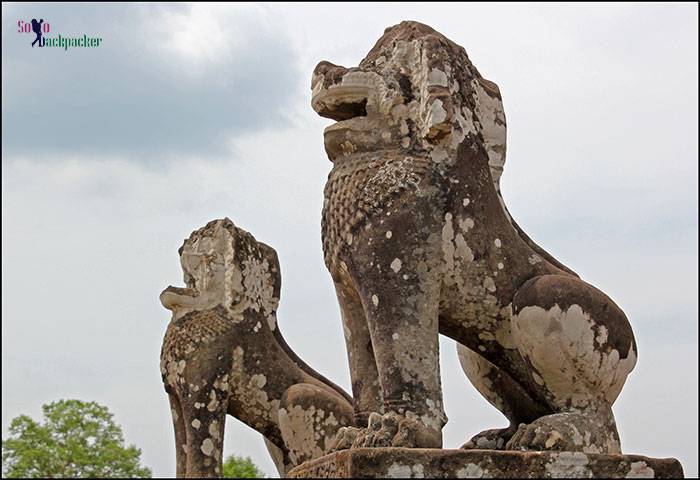
Anyway, I ordered some noodles and a cold drink and then the shop owner, who was a lady started a conversation with me. My plan was to go Banteay Srei now, which is 24 kms away from East Mebon. It was a big distance to cover on a bicycle for two sides. That lady offered me a bike ride in 10 USD, but I refused. Later, she asked for 7 USD, but I went on the bicycle only which was a big mistake. I should have accepted her offer.
The paved road going to Banteay Srei from Srah Srang is in excellent condition and again passes through the beautiful countryside of Cambodia. If you really interested to cover this distance by a bicycle, then definitely go for it. It will be a unique experience and gives you a rather different perspective of remote villages of Cambodia. You will get a better and closer chance to experience the life and culture in these villages. I did not found any other tourist riding a bicycle on the road to Banteay Srei. All of them were there by reserved cabs or tuk-tuks. But, just near the Banteay Srei temple parking, I found a young lady with her bicycle! That was a pleasant surprise.
Banteay Srei (23 kms from Srah Srang): Before entering to the Banteay Srei Temple, we have to pass through a welcome center, a series of shopping stalls and then a series of rice fields. Welcome center has a nice description on the history of Banteay Srei displayed on the wall. Shopping stalls sell various items from hats, caps, clothes to water, soft drinks and noodles. The rice field was special, because of the Sen Pidor rice cultivated here. It is cultivated here by seed scattering method and considered as the fast grown rice which can yield crop in 110 days only.
Banteay Srei is one of the best preserved temple of Angkor Archaeological Park. This temple was not built by any king, but two wealthy brahmin brothers Yajnavaraha and Vishnukumara, who were the landowners in the area. This is also the first of the Angkor monuments to rebuild during the various conservation projects. This temple is also known as Citadel of the Women because of the various images of voluptous devatas sculpted on the temple niches. The decoration on the walls of Banteay Srei are so beautiful that it will require a separate post with many images to describe this masterpiece of Khmer Art.
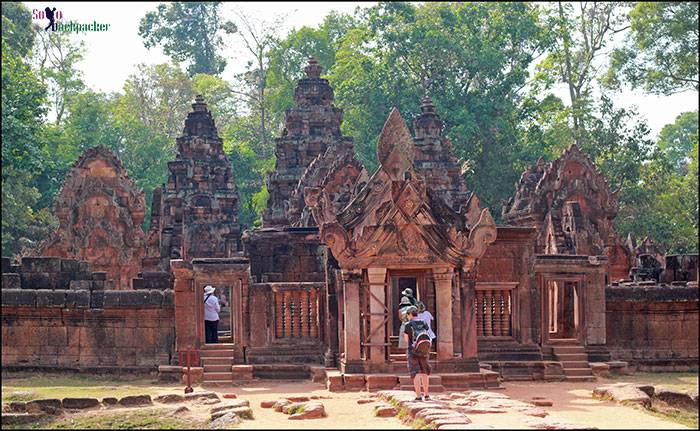
Though I thoroughly enjoyed that approx 50 kms to and fro cycling to Banteay Srei from Srah Srang, but I was completely tired of the first day trip. It was approx.95 kms of bicycling on the first day. However, in the evening I got some beautiful shots of sun set from the Angkor Park. By the time I returned back from Banteay Srei to Srah Srang, It was completely dark and Siem reap was still about 11 kms away. So, I moved slowly and came across an interesting local market on the outskirts of Siem Reap. I will write a separate post on that market visit.
Later, when I entered in Siem Reap city, I forgot the way to my hotel. I only knew the name of the hotel and had no idea about its location. The only thing I remembered was that there was a CALTEX petrol pump. After asking the direction from one people to another , somehow I managed to reach the hotel at 9.30 PM. This end my first day cycling trip to Angkor Archaeological Park.


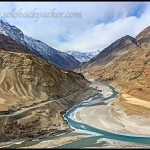
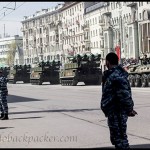
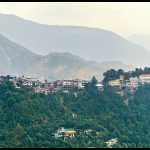
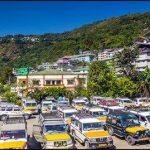
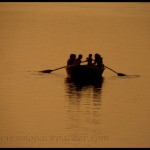
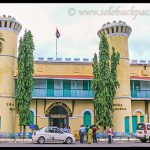
Beautiful description… I re-lived my experience at Angkor Archaeological Park. Keep up the great work buddy.
great information abt angkor temple….the pics r vey very unique thnx fr sharing this post .
The place is brilliant. Nice post.
awesome joruney…amazing temple !!!